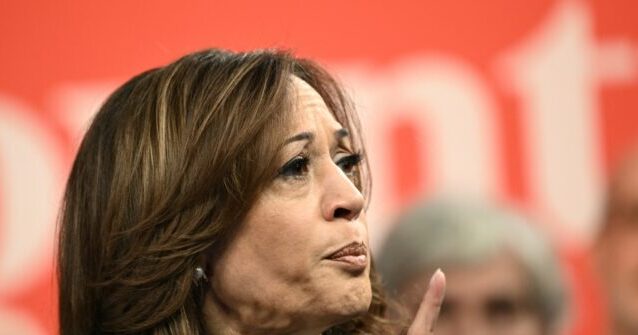In September, the U.S. Leading Economic Index (LEI) experienced a notable decline of 0.5 percent, reflecting an ongoing trend that raises concerns about potential economic slowdowns in the coming months. This decline is more significant than economists had anticipated, with a consensus forecast predicting a smaller drop of just 0.3 percent. The LEI, a crucial indicator used for forecasting future economic activity, has now fallen by 2.6 percent over the last six months, hinting at underlying weaknesses within the economy. Contributing factors include a persistent slump in manufacturing orders and an inverted yield curve, which together signal a tightening economic environment. Moreover, previous month data has been revised downward to indicate a greater decline, further compounding the pessimism surrounding the economic outlook.
This downturn presents a political challenge for Vice President Kamala Harris, who has emphasized manufacturing growth as one of the significant successes of the Biden-Harris administration. The administration’s narrative centers around efforts to bolster the industrial sector, particularly through increased spending aimed at enhancing manufacturing capabilities related to green energy and transportation initiatives. However, the consistent decline of the LEI raises doubts regarding the durability and quality of these supposed advancements in manufacturing, especially since key components of the index, such as industrial new orders, have shown considerable weakening. Harris’s messaging may need reevaluation as economic indicators provide a less favorable assessment of the industrial landscape.
According to Justyna Zabinska-La Monica from The Conference Board, weak factory orders remain a prominent factor dragging down the LEI. The persistent global manufacturing slump is compounded by additional factors, including an inverted yield curve and declines in building permits. Consumer confidence regarding future business conditions also reflects a tepid outlook, contributing to the overall lack of vitality in the manufacturing sector. The LEI signals uncertainty ahead, aligning with The Conference Board’s expectations of moderate economic growth through the latter part of 2024 and into early 2025. The confluence of these elements indicates that the economy could be entering a period of stagnation, raising alarms over the sustainability of economic growth.
The decline in new orders highlights potential challenges facing the manufacturing sector, which has traditionally served as a critical indicator of broader economic health. Economists suggest that this reduction in orders could imply forthcoming obstacles or contractions within the economy at large. Notably, employment levels in the manufacturing sector have seen a downturn, with declines in three of the last four months and current workforce numbers that are below one year prior. As manufacturing often leads economic trends through its interplay with consumer demand and investment, its current struggles may foreshadow a broader economic contraction.
The broader decline within the LEI can be attributed to a variety of critical factors, including tighter credit conditions and fragility in the housing market. The consistent presence of an inverted yield curve conveys investor expectations of slower growth or a looming recession. These indicators, coupled with falling new orders and declines in consumer confidence, underline the precarious nature of current economic circumstances. The manufacturing sector’s role as an economic bellwether intensifies the urgency of these indicators, as they become increasingly relevant for gauging future economic performance and potential pitfalls.
For Harris, the continuing decline of the LEI poses a substantial hurdle to her campaign messaging, which proudly touts the administration’s progress in revitalizing the economy. Despite her efforts to highlight manufacturing achievements, the negative trajectory of leading indicators makes it increasingly challenging to assure voters of economic stability. The potential for economic contraction looms large, which may necessitate a strategic pivot in both policy and rhetoric from the administration to address the emerging realities of the industrial landscape and broader economic conditions. As the LEI signals uncertainty and possible slowdown, the interplay between economic performance and political narrative will be critical as the Biden-Harris administration navigates these complex challenges ahead.

